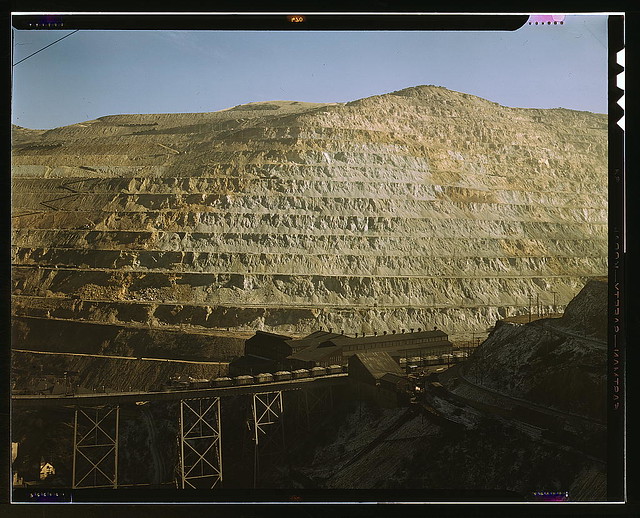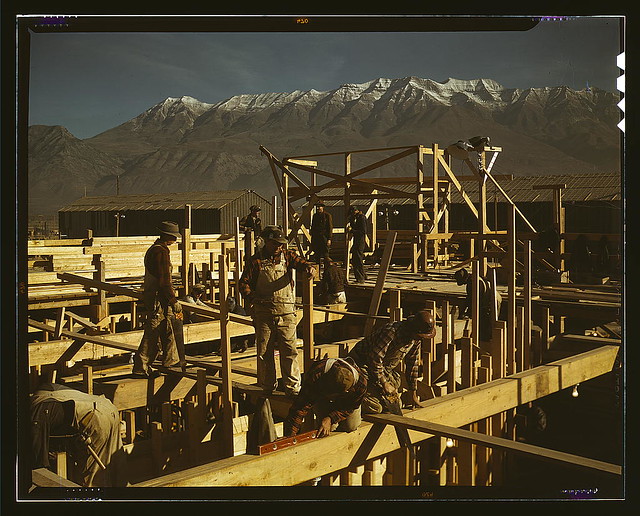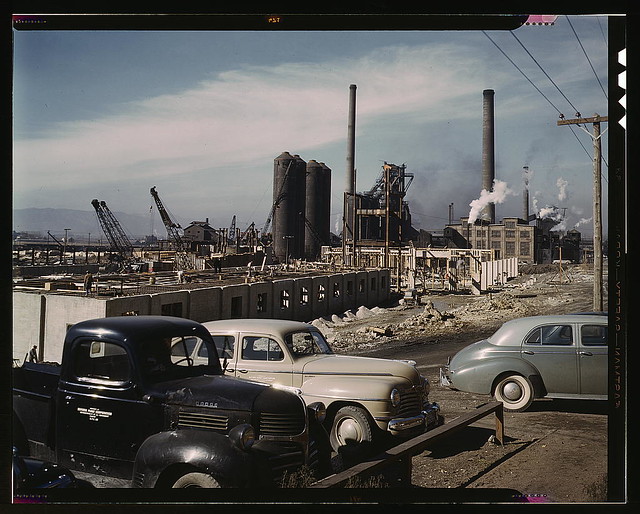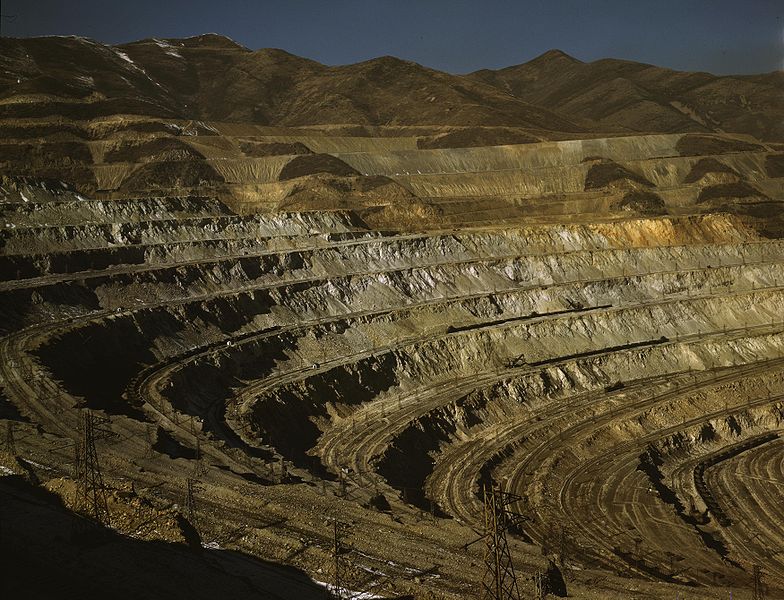.
View of the Utah Copper Company open-pit mine workings at Carr Fork, as seen from the railroad, Bingham Canyon, Utah: photo by Andreas Feininger, November 1942
Carr Fork Canyon as seen from "G" bridge, Bingham Copper Mine, Utah. In the background can be seen a train with waste or over-burden material on its way to the dump: photo by Andreas Feininger, October 1942

Open-pit workings of the Utah Copper Company, Bingham Canyon, Utah. This is the Carr Fork side from which the company obtains huge amounts of ore. The Carr Fork bridge and main shops appear in the foreground: photo by Andreas Feininger, November 1942

Constructing a building on the site of a new steel mill which will soon turn out steel for the war needs, Columbia Steel Co., Geneva, Utah: photo by Andreas Feininger, November 1942
Partly finished open hearth furnaces and stacks for a steel mill under construction which will soon be producing vitally needed steel, Columbia Steel Co., Geneva, Utah: photo by Andreas Feininger, November 1942

Steel and concrete go into place rapidly as a new steel mill takes form, Columbia Steel Co., Geneva, Utah. The new plant will make important additions to the vast amount of steel needed for the war effort: photo by Andreas Feininger, 1942
- American Smelting and Refining, Garfield, Utah: photo by Andreas Feininger. November 1942

Photos by Andreas Feininger from Farm Security Administration/Office of War Information Collection, Library of Congress







3 comments:
Tom,
What a contrast between these views of Carr Fork mines in Utah and those sweet petunias next to WCW's "purple trumpets/ fragile/ as our hopes" (hellos from Johnny!) . . . .
10.3
grey whiteness of fog against invisible
ridge, blue jay in shadowed pine branch
in foreground, sound of wave in channel
present in painting, as blue
between past and to see
those elements, that gesture,
incident which it seems
grey-white of fog reflected in channel,
circular green pine on tip of sandspit
I think you've both proved and enlarged on Feininger's quote by using the photographs of the terraced mines and surrounding Utah industrial operation to construct sentences that tell a story that anyone in any language could understand. I really like the title you've given this piece also.
Hello Stephen and Johnny and Curtis.
Yes, a shift in scale in moving from the magnum supertelephoto depth of field in the heroic wartime earthworks of Feininger to the infinitely delicate close-up capture of the lovely (and entirely peaceable) petunias.
The very large and the very small.
It is only the fact Feininger stands off so carefully from these visions of colossal excavation that makes them, for me (almost), palatable. Still when looking at images of the Nile Valley before the flood one cannot but remember the Pharoahs -- speaking of "constructing the sentence"...
I can't ever completely chase off the passing thought that in each of these images made by someone in government employ, at least a part (sometimes a small part, sometimes a large part) of the content and meaning of the image has something to do with national destiny, as conceived, in however a clear or inchoate or confused way, by somebody.
(In Feininger's case, the objectivity is both vast and clinical, but it's the patriotic oomph in the captioning -- "vitally needed steel... for the war effort" -- that gives the game away. That patriotic underlining of the image, implicitly a violation of Feininger's own principle re. the picture as self sufficient "language", carries the ring of the OWI of 1942-1943, as vs. the FSA of 1935-1942, the change in intention and method between the two agencies reflecting, among other things, the transition from a devastated peacetime economy to a booming wartime economy.)
I feel this more strongly than ever after looking recently at several thousand images from the same period released into public domain by the Deutsches Bundesarchiv.
With those, of course, one can look with a bit more distance, and thus perhaps see the motives exposed somewhat more plainly...
Post a Comment